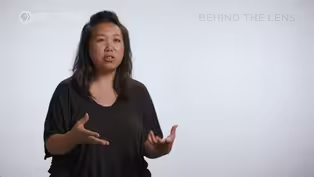
Anatomy of a Scene: How to Have an American Baby
Clip: Season 36 Episode 3614 | 3m 37sVideo has Closed Captions
Anatomy of a Scene from How to Have an American Baby with Leslie Tai.
Anatomy of a Scene from How to Have an American Baby with Leslie Tai.
Problems playing video? | Closed Captioning Feedback
Problems playing video? | Closed Captioning Feedback
Major funding for POV is provided by PBS, The John D. and Catherine T. MacArthur Foundation, the Wyncote Foundation, Reva & David Logan Foundation, the Open Society Foundations and the...

Anatomy of a Scene: How to Have an American Baby
Clip: Season 36 Episode 3614 | 3m 37sVideo has Closed Captions
Anatomy of a Scene from How to Have an American Baby with Leslie Tai.
Problems playing video? | Closed Captioning Feedback
How to Watch POV
POV is available to stream on pbs.org and the free PBS App, available on iPhone, Apple TV, Android TV, Android smartphones, Amazon Fire TV, Amazon Fire Tablet, Roku, Samsung Smart TV, and Vizio.

POV Playlist
Every two weeks, we curate a selection of POV docs, old and new, around a central theme. Stream while you can — until the next Playlist!Providing Support for PBS.org
Learn Moreabout PBS online sponsorshipI'm Leslie Tai, and I'm the director of How to Have an American Baby .
How to Have an America Baby is a kaleidoscopic portrait of the Chinese birth tourism industry in Los Angeles.
The film follows three separate storylines about women who travel to the U.S. to give birth, as well as offers glimpses into the complex ecosystem surrounding them.
The scene that I want to talk about is actually the childbirth scene, which is the longest scene in the film and arguably one of the most harrowing.
Why include the scene?
I think there's there's a dearth of representation, real life representation of the process of childbirth in mainstream media, popular culture.
Childbirth is represented as the moment that the child enters into the world, but for those of us that have been through it, childbirth is the nine months leading up to that moment.
It's that 30 hours leading up to that moment.
And so from a purely feminist standpoint, it was really important for me to provide that sort of depiction, true to life depiction of a process that oftentimes gets idealized or glossed over.
Here you're seeing the moment that I get called out to translate.
The heart rate of her baby seems to be dropping.
So she's having a moment, and in that exact moment, I get called out of the room to assist with a nurse who wants me to help translate for the woman next door.
It's an incredible moment, and we decided to keep it in the film, or it felt like it was extremely necessary to include in the film because of the moment that we break through the fourth wall.
You know, you might be lulled into the sense of, you know, forgetting the fact that I'm actually behind the camera or that these are real people and this is all real life, but it's it's in the height of of such a life and death moment that I get called into another story.
And it's essentially the moment in which another character enters the story.
Behind the Lens: How to Have an American Baby
Video has Closed Captions
Clip: S36 Ep3614 | 1m 48s | A message from the filmmaker. (1m 48s)
Providing Support for PBS.org
Learn Moreabout PBS online sponsorshipSupport for PBS provided by:
Major funding for POV is provided by PBS, The John D. and Catherine T. MacArthur Foundation, the Wyncote Foundation, Reva & David Logan Foundation, the Open Society Foundations and the...
















